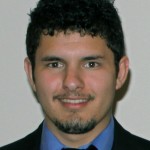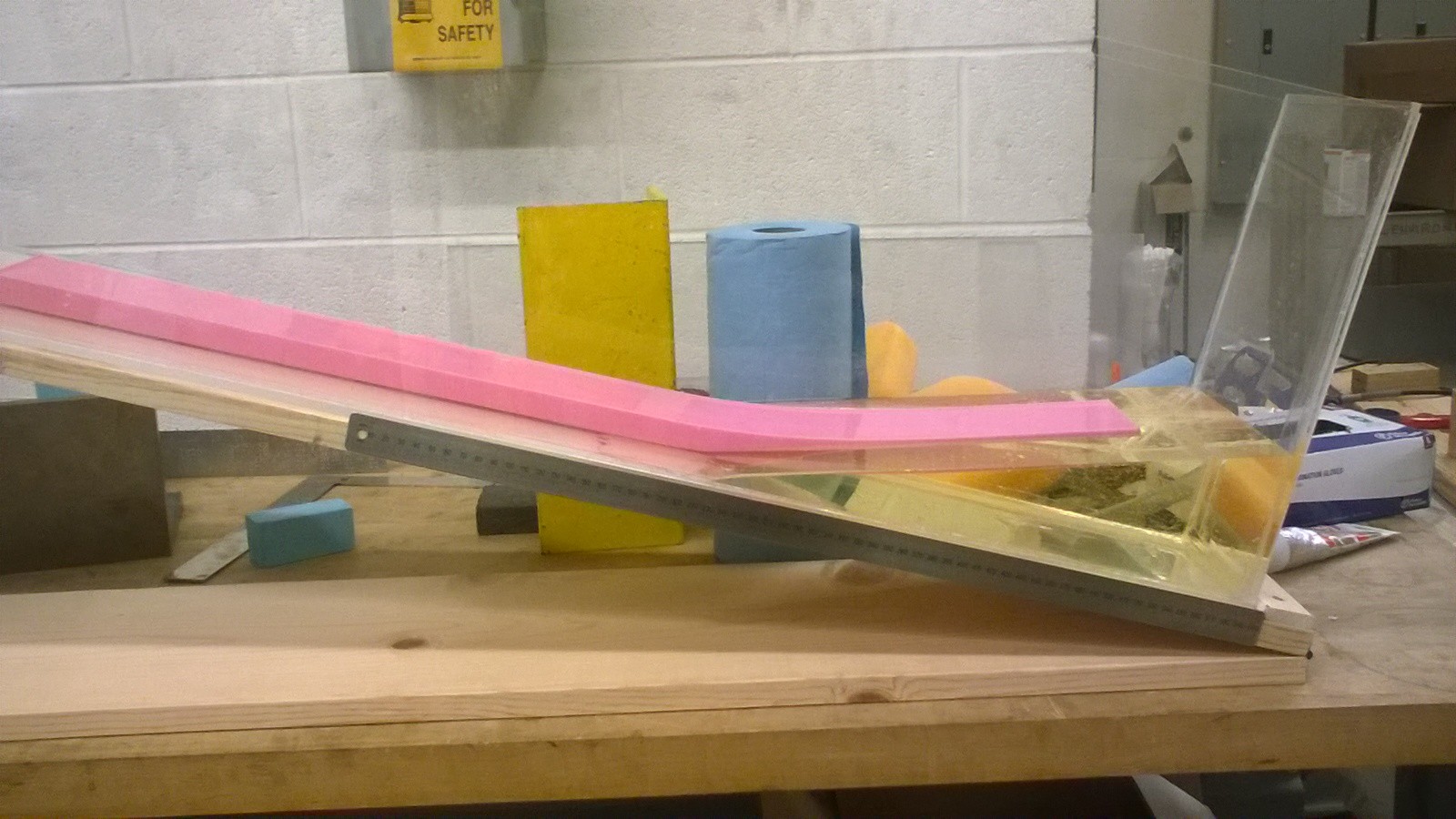NSF PLR 1341428 – Collaborative research: Simulating iceberg calving from ice shelves using damage mechanics
Overview
The objective of this proposal is to develop a unified physics-based model, coupling the fracture and flow processes in ice shelves, for predicting the location and propagation rate of crevasses and the iceberg calving cycle. Currently, the processes that lead to disintegration and retreat of ice shelves are poorly understood and evaluated by empirical models that do not capture the true physics. This has the potential to lead to inaccurate projections of the freshwater fluxes to the ocean over short decadal time scales and, through the dynamic coupling between floating and grounded ice, sea level rise. To achieve our objective we propose to:
- Develop a physically consistent and computationally feasible finite element formulation that simulates fracture of ice shelves. The formulation is based on an experimentally validated constitutive damage model for simulating tensile creep fracture of ice accounting for hydrofracture from surface melt, basal crevasses due to seawater pressure within crevasses;
- Develop a temporal and spatial coupling schemes for prescribing the kinematic boundary conditions from observations and for evolving and advecting fractures sequentially over longer periods of time;
Publications
- S. Jimenez, J.N. Bassis, R. Duddu, “An updated-Lagrangian damage mechanics formulation for modeling the creeping flow and fracture of ice sheets” Computer Methods in Applied Mechanics and Engineering, 313: 406-432, 2017, doi: 10.1016/j.cma.2016.09.034 (link)
- M.E. Mobasher, R. Duddu, J.N. Bassis, H. Waisman, “Modeling hydraulic fracture of glaciers using continuum damage mechanics.” Journal of Glaciology, 62(234): 794-804, 2016, doi: 10.1017/jog.2016.68 (link)
- S. Jimenez and R. Duddu, “On the evaluation of the stress intensity factor in calving models using linear elastic fracture mechanics.” Journal of Glaciology, First view, 2018, doi: 10.1017/jog.2018.64 (link)
- K. Maisha, V. K. Devendiran, C. Morency, and R. Duddu. “An Analysis of Ice Sheet-Ice Shelf Mechanics through Finite Element Models” Young Scientist (a high school research journal), 8(1): 28-31, 2018 pdf
- R. Duddu, S. Jimenez and J. N. Bassis. “A nonlocal continuum poro-damage mechanics model for hydrofracturing of surface crevasses in grounded glaciers.” Journal of Glaciology, 2020, doi: 10.1017/jog.2020.16 (link)
- V. Devendiran and R. Duddu, “A phase field model for simulating mixed-mode fracture of brittle materials under uniaxial and biaxial compression.” in preparation.
Presentations
- R. Duddu, “Implementing calving laws based on linear elastic fracture mechanics in CISM.” CESM Annual Workshop 2018, Boulder, CO, June 18 – 21, 2018.
- S. Jimenez, V. K. Devendiran and R. Duddu. “Phase-field approach to brittle fracture propagation in glaciers.” ASCE EMI 2018 Conference, Boston, MA, May 29 – June 1, 2018.
- S. Jimenez and R. Duddu. “Continuum damage mechanics approach to water-filled crevasse propagation in glaciers.” ASCE EMI 2018 Conference, Boston, MA, May 29 – June 1, 2018.
- R. Duddu, S. Jimenez and J. N. Bassis. “Continuum damage mechanics approach to penetration of water-filled surface crevasses.” American Geophysical Union, Fall Meeting 2017, Abstract #C23B-1216, New Orleans, December 11 – 15 , 2017.
- R. Duddu, “Damage mechanics approach to crevasse propagation and iceberg calving.” WAIS Workshop 2017, Camp Casey, WA, October 8 – 11, 2017.
- R. Duddu, “Damage mechanics modeling of crevasse propagation and calving.” CESM Annual Workshop 2017, Boulder, CO, June 19 – 22, 2017.
-
S. Jimenez, R. Duddu and J. N. Bassis. “An updated-Lagrangian nonlocal damage mechanics formulation for modeling ice sheet flow and fracture ,” ASCE EMI 2017 Conference, San Diego, CA, May 29th – June 1st, 2018.
- R. Duddu, “Damage mechanics modeling of crevasse propagation in glaciers and ice sheets.” Department of Geological And Atmospheric Sciences, Iowa State University, IA, March 7, 2017.
- R. Duddu, “Damage mechanics approach to modeling fracture: Applications to Antarctic ice sheets and composite fatigue.” Department of Civil and Environmental Engineering, University of Tennessee, Knoxville, TN, February 23, 2017.
- R. Duddu, “Virtual experimentation and testing: Using computer simulation to analyze, test, design and predict.” The School for Science and Math at Vanderbilt, Nashville, TN, September 29, 2016.
- M.E. Mobasher, R. Duddu, J.N. Bassis, H. Waisman, “Modeling hydraulic fracture of ice shelves using continuum damage mechanics.” ASCE EMI 2015 Conference, Nashville, TN, May 22-25, 2016.
FEniCS and C++ codes
The updated-Lagrangian damage mechanics formulation by Jimenez et al., (2017) is implemented in the open-source finite element software FEniCS (https://fenicsproject.org). Here we provide the input files and codes that are used to generated the results in this paper.
- Nonlinear Stokes Flow in FEniCS package (NSFF.zip) provides the FEniCS program for simulating creep flow driven surface crevasse propagation in an idealized rectangular domain along with the user manual, sample meshes and post-processing subroutines.
- Van_der_Veen.cpp_.zip provides the C++ code for estimating the surface crevasse penetration depth using the linear elastic fracture mechanics approach of van der Veen (1998a)
- Weertman.cpp_.zip provides the C++ code for estimating the surface crevasse penetration depth using the dislocation based fracture mechanics approach of Weertman (1973).
For more details on fracture and damage mechanics approaches refer to our publications by Jimenez et al. (2017) and Jimenez et al. (in prep.)
The damage mechanics for hydraulic fracture by Mobasher et al., (2016) was originally implemented in the open-source finite element software FEAP (http://projects.ce.berkeley.edu/feap/). We have recently implemented this framework into FEniCS and here we provide the input files and codes only for FEniCS. The FEAP codes can be made available upon email request.
Analogue experiments
Ice sheet dynamics can be studied and demonstrated using laboratory experiments on non-Newtonian fluids and soft elastic solids. Recently, we used a soft elastic silicone raft floating in a tank of corn syrup solution was an analogue of a floating ice shelf (see figure below) inspired by the work of Sayag and Worster (2011). This work was done as a part of existing summer research programs for undergraduates and high school students at Vanderbilt University. Using experimental and computational methods (laser profilometry and finite element modeling in COMSOL), students investigated the relationship between groundling line, basal slope and seawater level.
Students
 |
Stephen JimenezPh. D., Graduated: December 2017 Research project: Updated-Lagrangian full Stokes damage mechanics model of crevasse propagation |
 |
Vignesh Kumar DevendiranPh. D. student, Graduated: June 2019 Research project: Phase field modeling of damage evolution in ice shelves |
 |
Connor MorencyUndergraduate student, Class of 2019 Summer research project: Analogue experiments and finite element simulation of ice shelf fracture |
 |
Kristi MaishaHigh school student at SSMV (junior); Undergraduate student, Class of 2022 Research project: Finite element modeling of a floating ice shelf as a elastic beam |

©2024 Vanderbilt University ·
Site Development: University Web Communications